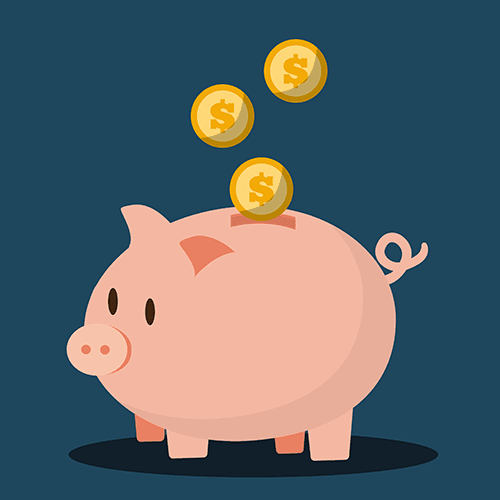Attention, Health Savings Account (HSA) owners! Growing your HSA may seem challenging, but it’s possible. Check out these tips for building your HSA from the ground up.
What is an HSA?
For people enrolled in high deductible health plan (HDHP), an HSA is the way to go. You pay lower premium costs and can save money in the HSA to cover deductibles, copays, and other out-of-pocket expenses.
HSAs are popular for many reasons. First, there are the triple tax benefits:
- Pre-tax contributions
- Tax-free withdrawals for eligible medical expenses
- Tax-free interest on the account balance and investment
income
Second, with an HSA you own the account for life. If you leave your employer, no matter what the reason, the HSA is yours to keep. This is different than with a Flexible Savings Account (FSA) or Health Reimbursement Arrangement (HRA).
Plus, if you’re thinking long-term, your HSA can be another retirement account. After age 65, you can use your HSA account for any reason (not just medical expenses) without being penalized. Withdrawals are taxed as regular income.
Growing Your HSA
Growing your HSA may seem challenging, particularly if you have a lot of medical expenses. But, there are ways you can help your account take off.
Before we talk about investing in more detail, let’s start with the basics. Some HSA custodians require a minimum balance before you can invest. The minimum balance thresholds usually range between $1,000 – $2,500.
Maximize your HSA contributions
Contribute as much as you can afford to your HSA, up to the annual limit. If possible, maximize your HSA contributions. Just remember that you can change your contributions at any time.
Did you know about this HSA funding trick?
HSA Rollover
Worried about “use it or lose it”? There is no “lose it” with an HSA. All unused money stays in the account and rolls over year after year. This allows you to continually build the account if you don’t need it for current medical expenses.
Earn Tax-Free Interest
As the name indicates, HSAs are a type of savings account. As with a traditional savings account, you earn interest on the balance. The bigger your balance, the more interest you earn, and it’s all tax-free! Even though interest rates are low, any earnings are helpful if the account does not meet your minimum investment threshold.
But, if you’re looking for larger, quicker account growth, you should consider investing your part or all of your HSA balance.
Investing HSA Funds
Now that you’ve met the minimum threshold (if one is required), it’s time to think about HSA investing. Currently, average interest rates are shockingly low (less than 1%). The ability to invest HSA funds is huge!
In 2021, HSA investment assets grew 73 percent from the previous year. However, there’s one thing that stands out: it’s estimated that only 6 percent of all HSA account holders invest. That means the vast majority of HSA owners aren’t taking advantage of this opportunity for tax-free earnings.
Investment options for most HSAs include stocks, bonds, and mutual funds. Or choose from a variety of growth plans selected by a licensed investment adviser. Your benefits administrator may also offer investor statements and educational tools, among other features.
How Much Could You End Up With?
With maximum annual contributions and few medical expense withdrawals, you could build a substantial nest egg as part of your retirement plan.
For example, if:
- You contribute $3,000 a year to an HSA for 25 years …
- Don’t withdraw any funds, and …
- The money grows at 8% …
You will end up with nearly $238,000. That’s a nice addition to anyone’s retirement.
Growing your HSA is important, no matter how you use the account. Contribute as much as you can afford, rollover your account balance, and invest your HSA funds when possible. The tax advantages can help with both short- and long-term growth.

